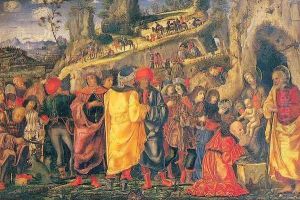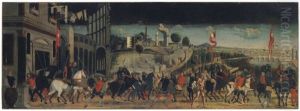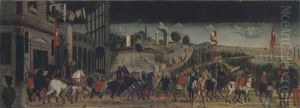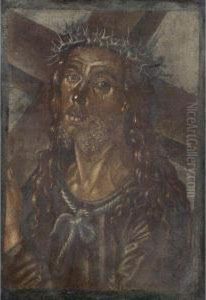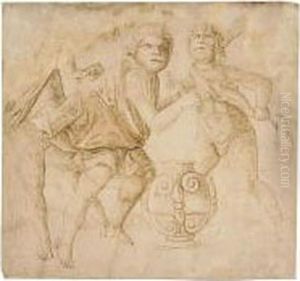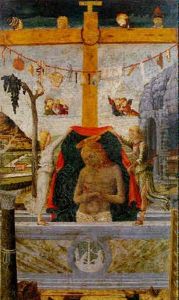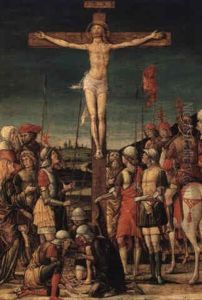Bernardo Parentino Paintings
Bernardo Parentino, also known as Bernardo Parenzano or Lorenzo Veneziano, was an Italian painter and monk of the Renaissance period, whose life and career spanned the late 15th and early 16th centuries. Born around 1437, possibly in Parenzo (today Poreč, Croatia), which was then part of the Republic of Venice, Parentino's contribution to art is often associated with the Venetian school, though his work also shows significant influences from the broader Italian Renaissance.
Parentino's early life is shrouded in mystery, and little is known about his initial training. However, his works suggest that he was well-acquainted with the innovations of contemporary Venetian artists, as well as with the developments in Florentine art. He is particularly noted for his religious paintings, which were characterized by their detailed narrative scenes, vibrant use of color, and incorporation of architectural elements that reveal an intricate understanding of perspective—a skill that was becoming increasingly important during the Renaissance.
Throughout his career, Parentino traveled extensively across Italy, which is evidenced by the variety of stylistic influences seen in his works. He spent a significant amount of time in Padua, where he was influenced by the works of Andrea Mantegna and Donatello. This period was crucial for the development of his style, which began to exhibit a greater sense of realism and a more profound depiction of human emotion.
One of Parentino’s most famous works is the altarpiece in the Basilica of Saint Anthony in Padua, which showcases his ability to blend narrative storytelling with deep religious sentiment. His paintings often featured scenes from the life of Christ, the Virgin Mary, and various saints, imbued with a sense of piety and devotion that was typical of the period.
Bernardo Parentino's death is believed to have occurred around 1531. Despite the relative scarcity of documented details about his life, his surviving works continue to be celebrated for their contribution to the development of Renaissance art in Venice and beyond. Through his paintings, Parentino has left a lasting legacy that reflects the transitional period of the late 15th century, bridging the gap between the Gothic traditions of the Middle Ages and the burgeoning humanist ideals of the Renaissance.
